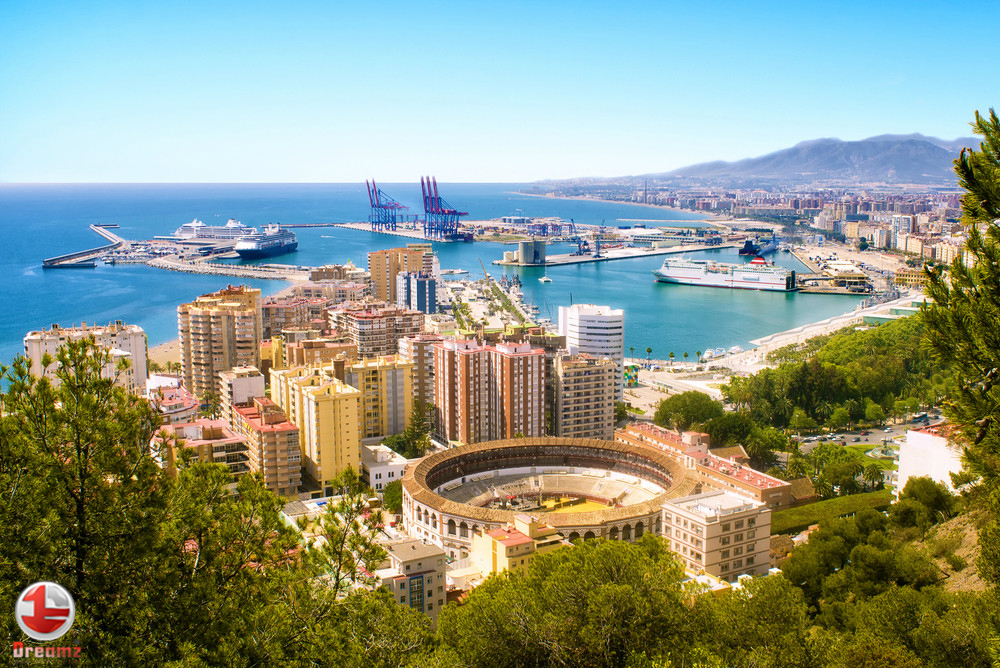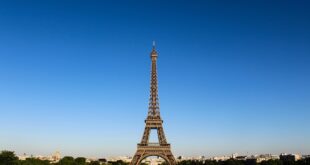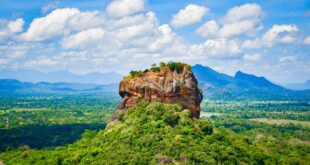For many people Andalucia is all that they imagine Spain to be. Great climate, sun, sea and beaches, bullfighting, sherry and flamenco. Covering over 33,000 square miles and running the length of mainland Spain’s southern coast it’s the most important and most populous of the 17 autonomous regions of Spain. Andalusia is crossed by the Sierra Morena range within the north and within the south by the snowcapped Sierra Nevada. The fertile basin of the Guadalquivir River lies between these mountain ranges. Huelva, Seville, Cadiz, Cordoba, Malaga, Jean, Granada and Almeria, all named for his or her principal cities, are the eight provinces that structure the region

History – Phoenicians first settled here within the 11th century BC founding several coastal colonies among them Gadir which is now Cadiz. Greeks and Carthaginians came within the 6th century BC. The Romans expelled the Carthaginians within the 3rd century BC and that they successively had their rule ended by the Visigoths within the 5th century AD. 711 saw the Moors cross the Strait of Gibraltar and establish the centre of their western emirate here in Cordoba. The Moorish period was the golden age of Andalusia. Agriculture, leather working, mining, pottery, textiles and trade were all fostered and brought great prosperity. Cordoba, Granada and Seville, embellished by the best Moorish monuments in Spain, the Mezquita, the Alcazar and therefore the Alhambra Palace respectively were celebrated as centres of arts, culture and science. It remained under Moorish rule until the 13th century when, with the exception of the Moorish kingdom of Granada, most of it had been conquered in by the kings of Castile, who successively fell to the Catholic kings in 1492. Andalucia declined along side the remainder of the country from the 16th century onwards. Although trade with the New World enabled the ports of Seville and Cadiz to still flourish. In 1713 Gibraltar was ceded to Britain and in 1833 Andalucia was divided into this eight provinces. The region was a stronghold of anarchism during the Spanish republic. It, however, fell early to the insurgents within the Spanish war . Recurrent demonstrations against Franco were seen across Andalucia during his dictatorship. It became an autonomous region in 1981and elected its first parliament the subsequent year.
The region has some interesting contrasts. The deserts of Almeria within the east are the driest a part of the entire country, while Sierra de Grazalema within the southwest, because it exposed to winds of the Atlantic, is that the rainiest a part of Spain. Both the cities of Cordoba and Seville are notorious for his or her stifleing heat during the summer months but the peaks of the Sierra Nevada remain snow capped all year round. And contrast the rugged coastline of the Cabo de Gata or the Atlantic Coast of Cadiz, both with their comparatively deserted beaches, with the intensely developed area within the province of Malaga. Yes the beaches are still there – you only can’t see them for the tourists.
There is still a robust Moorish influence within the character, customs and language of the people. With its tradition of bull fights, flamenco music and dance it’s one among Europe’s most strikingly colourful regions. With the abundance of Moorish and it’s pleasant climate it’s easy to ascertain why the expansion of tourism has been so strong in recent decades. Agriculturally, barren lands contrast with richly fertile regions where cereals, citrus , grapes, olives and sugar cane are produced. Industries, based generally on local agricultural produce, include flour milling, olive-oil extracting and wine making. Cattle, bulls for the ring, and fine horses are bred. The rich natural resource , exploited since Phoenician times, include copper, iron, lead and zinc. But despite all this poverty is widespread. Farm labourers are among the poorest in Europe and lots of unemployed people have migrated to the economic centres further to the north.
Semana Santa – Easter is Andalucia’s major festival and is widely known for a full week. It features processions of hooded penitents alongside floats decorated with scenes from the eagerness travelling through the streets of most cities and enormous towns. Accommodation are often difficult to seek out during the week and booking ahead is suggested .
Flamenco is believed to possess been introduced to Andalucia, it’s home today, within the 15th century by gypsies arriving within the region. it’s a mixture of music, predominantly the guitar, song and dance and is played at fiestas, in bars and at private parties. Audience participate is extremely much encouraged.
Almeria – Probably founded by Phoenicians, Almeria flourished from the 13th to the 15th centuries because the outlet of the Moorish kingdom of Granada. In 1489 it fell to the Christians. Today the sunny, mild climate attracts many northern Europeans both as tourists and permanent settlers. The capital, also Almeria, may be a busy Mediterranean port. It exports significant amounts of agricultural produce, also as iron and other minerals mined nearby. the town has refineries, chemical and cement plants, and lightweight industries.
Cadiz – In 1100 BC the Phoenicians founded the port of Gadir, known today as Cadiz, which became a marketplace for silver and tin. Some 600 years later it had been taken by the Carthaginians and passed within the 3rd century BC to the Romans. It flourished until the autumn of Rome, but suffered from the Visigoths and in contrast to much of Andalucia declined further under the Moors. Its fortifications were rebuilt following it’s reconquest in 1262 by Alfonso X of Castile. Following the invention of the New World, Cadiz revived its prosperity, as many ships from America unloaded their cargoes there. Columbus sailed from Cádiz in 1495, his second voyage. Inthe late 16th century both Sir Drake and therefore the refore the earl of Essex led attacks on the fleet anchored there and the city respectivly. When in 1718 a sandbar blocked Seville’s port Cádiz became the centre for brand spanking new World trade. the town declined after Spain lost its American colonies .Cádiz resisted a two year siege by the French from 1810 to 181212 unti lthe Duke of Wellington’s forces relieved it. Cadiz fell to the Nationalists within the Spanish war . Today the town , which lies at the southern end of the bay of Cadiz, has an abundance of parks promanades and squares. it’s chiefly a port exporting wines, notably the local sherry which features a worldwide reputation and other agricultural items and importing coal, foodstuffs and iron. there’s an outsized fishing fleet based here and a few shipbuilding on a limited scale takes place. At the northern end of the bay is that the US naval base at Rota.
Cordoba lies beside a loop within the river Guadalequiver upstream from Seville. During the time when the Romans ruled Cordoba was the most important city in Spain and enjoyed great prominence during the time of the Moors. They built the Mezquita, the foremost beuatiful mosque in Spain.
Granada – Originally a Moorish fortress, it became the seat of the dominion of Granada in 1238. At the hieght of Moorish rule this kingdom encompassed both the nieghbouring province of Malaga and Almeria also as parts of Cadiz and Jean. During this point the town was recognized as a centre of art, commerce, industry and science. because the christians drove south the town was the stronghold of the Moors in Spain, surrending eventually in 1492. within the 17th century Granada owed it’s exi prominance to the very fact that it had been a serious silk centre. It stands at the confluence of the rivers Darro and Genil. The local surrounding area is given over to agriculture and mineral processing with Granada acting because the commercial hub for these. the town may be a major tourist centre with attractions like the Alhambra Palace and other notable Moorish buildings. Facing the Alhambra across the Darro river, the Sacromonte hill is honeycombed with gypsy caves. The nearby ski resorts within the Sierra Nevada also bring visitors to the locality. South of Granada lie the valleys of the Alpajarras bounded to the north by the Sierra Nevada and to the south the sierras of Lujar, La Contraviesa and Gador. the world is extremely picturesque dotted with the normal whitewashed villages. Fertile soil provides good farming with citrus , bananas and avacadoes amongst the food grown.
The city of Huelva which is that the capital of the province of an equivalent name lies on the Odiel river. it’s a busy port exporting copper, cork and sulphur. Like most Spanish ports it’s it’s fishing fleeet and additionally some oil refining and ship building. it’s a limited tourist trade during the summer months. the town is furnished with water via a Roman aquaduct. Columbus planned his voyages at the nearby La Rabida monastery. The Coto de Donana park , Europes most vital and largest wildlife sanctuary, lies within the delta of the river Guadalquiver. 60,000 acres are fenced of to supply the right habitat for various speices of wildlife, birds especially .
Jaen was once the seat of alittle Moorish kingdom and played a crucial role within the conquest of Granada from the Moors by Christian forces during the 15th century. During the Peninsular war of the first 1800’s the French won a serious victory here. Today it’s the commercial hub for a fertile agricutural area producing vegetable oil and wine. Europes richest lead mines are nearby and copper and iron also are extracted. The town Alcalá la Real is understood it’s mineral springs. The Parque Natural de las Sierras de Cazorla, over 2,000 square kilometres, is that the biggest protected are in Spain. Here you would possibly see ibex, red or Dama dama and boar .
The city of Malaga was founded by the Phoenicians and skilled the hands of the Carthaginians, the Romans, the Visigoths and therefore the Moors when it prospered as a serious seaport for the dominion . It finally fell to the Christian forces in 1487 Málaga is situated on the bay of Malaga and may be a major port. Exports include the local wine, almonds, dried fruits, olives and ore . It’s beaches, luxurious vegitation and mild climate make it one among the world’s leading tourist destinations. Picasso was born in here and you’ll find a museum of his works.
Seville was important in Phoenician times and favoured by the Romans. It continued because the major city of southern Spain under the Visigoths. It fell to the Moors in 712 and have become a prominent centre for culture and commerce. After a drawn out siege it had been captured by the Christians in 1248. Some 300,000 Moors are reputed to possess fled the town following it’s capture. Seville entered its greatest period of prosperity with the invention of America and was the most trading port with the new colonies. In 1718 a sandbar closed the port to shipping and Seville went into a gentle decline. The French sacked the town in 1810. Throughout the war Seville was held by the Nationalists. Today Seville is both capital to the province and therefore the region of Andalucia. Standing on the river Guadalquiver, which connects it to the Atlantic, it’s returned to be a port of note accessible to ocean going vessels. Exports include minerals, cork, fruit, olives and wines. Armanents, chemicals, explosives, machinary, perfume, pharmaceuticals, porcelain, textiles and tobacco are all manufactured locally. it’s a serious cultural and tourist centre. Seville has kept much of its Moorish aspect and one among the world’s largest cathedrals occupies the location of a former mosque. The Giralda tower and therefore the court of oranges remain from the first Moorish structure. you’ll also find the tomb of Columbus within the cathedral. The 14th century Alcazar, built by Moorish artisans stands next to the cathedral and is superseded only by Granada’s Alhambra Palace. it’s recognized as Spain’s leading centre for bullfighting.
More information about Spain are often found at the Spanish Travel Guide
 Dreamz Turning Dreams Into Reality
Dreamz Turning Dreams Into Reality



